Ciclesonide
- CAS NO.:126544-47-6
- Empirical Formula: C32H44O7
- Molecular Weight: 540.69
- MDL number: MFCD00866004
- SAFETY DATA SHEET (SDS)
- Update Date: 2024-11-14 14:09:35
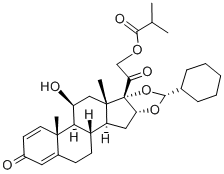
What is Ciclesonide?
Absorption
Ciclesonide and des-ciclesonide have negligible oral bioavailability (both less than 1%) due to low gastrointestinal absorption and high first-pass metabolism. The intranasal administration of ciclesonide at recommended doses results in negligible serum concentrations of ciclesonide.
Description
Ciclesonide, a new inhaled corticosteroid (ICS), is indicated for the prophylactic
treatment of persistent asthma. ICS treatment is a widely accepted standard of care
for maintenance therapy of chronic asthma, and the currently available agents include
fluticasone propionate, budesonide, triamcinolone acetonide, flunisolide, and
beclomethasone dipropionate. These agents exert their potent anti-inflammatory
effects via modulation of the glucocorticoid receptor (GR). Although ICS drugs are
generally safe and well tolerated compared with oral corticosteroids, many have
measurable systemic exposures, and concerns over potential side effects resulting
from it severely limit the dose at which they can be administered for long-term
therapy. Systemic adverse effects associated with corticosteroids include HPA axis
suppression, osteoporosis, abnormal glucose metabolism, cataracts, and glaucoma,
some of which could potentially occur with the long-term use of high dose ICS. The
key differentiators for ciclesonide relative to other ICS drugs are its longer duration
of action and lower systemic exposure. Ciclesonide is an isobutyryl ester prodrug. It is
cleaved by the endogenous esterases in the lung to des-isobutyryl ciclesonide (des-
CIC), which is a potent GR agonist. The binding affinity of des-CIC for human GR
(Ki=0.31 nM) is similar to other ICS such as budesonide (Ki=0.44nM) and fluticasone
propionate (Ki=0.24nM), while ciclesonide itself has about 100-fold lower
affinity (Ki=37nM). In lung tissue, des-CIC undergoes reversible lipid conjugation
to form oleate and palmitate ester conjugates, which act as a slow-release pool for the
drug and increase the pulmonary residence time. This, in turn, contributes to the
enhanced local effects and the long duration of action.
Inhaled ciclesonide was
generally well tolerated in these clinical studies. Ciclesonide did not suppress biochemical
markers of adrenal function in 52-week studies; however, the long-term
(>52 weeks) systemic effects remain unknown. Ciclesonide is chemically produced
via a semi-synthesis starting from 16-α-hydroxyprednisolone by first converting to a
triisobutyryl ester intermediate with isobutyric anhydride, and subsequent reaction of
the triester with cyclohexane carboxaldehyde and hydrochloric acid in dioxane. The
latter step produces the cyclic ketal as a mixture of diastereomers, which is subjected
to HPLC and fractional crystallization to produce ciclesonide.
Chemical properties
White Solid
Originator
Recordati Espana (Spain)
The Uses of Ciclesonide
A glucocorticoid microemulsion nasal preparation allergy inhibitor rhinitis.
Indications
For the treatment of nasal symptoms associated with seasonal and perennial allergic rhinitis in adults and adolescents 12 years of age and older.
Background
Ciclesonide is a glucocorticoid used to treat obstructive airway diseases. It is marketed under the brand name Alvesco.
Definition
ChEBI: Ciclesonide is an organic molecular entity.
brand name
Alvesco (Dynamit Nobel GmbH).
General Description
Ciclesonide (Omnaris) is a prodrug that requireshydrolysis of the isobutyrate ester at C21 to form theactive corticosteroid (des-ciclesonide). It has minimal oralbioavailability due to extensive metabolism, mainly byCYP3A4. The metabolites of ciclesonide have not beenfully characterized.
Pharmacokinetics
Ciclesonide is a pro-drug that is enzymatically hydrolyzed to a pharmacologically active metabolite, C21-desisobutyryl-ciclesonide (des-ciclesonide or RM1) following intranasal application. Des-ciclesonide has anti-inflammatory activity with affinity for the glucocorticoid receptor that is 120 times higher than the parent compound. The precise mechanism through which ciclesonide affects allergic rhinitis symptoms is not known. Corticosteroids have been shown to have a wide range of effects on multiple cell types (e.g., mast cells, eosinophils, neutrophils, macrophages, and lymphocytes) and mediators (e.g., histamine, eicosanoids, leukotrienes, and cytokines) involved in allergic inflammation.
Synthesis
Two separate approaches to the
syntheses of the chiral ciclesonide have been described in the
patent literature. The first route involves a chiral resolution
step and the second approach highlights a stereoselective
trans acetalization approach. The first synthesis of
ciclesonide started by reacting (11|?,16|á)-11,
16,17,21-tetrahydroxypregna-1,4-diene-3,20-dione (1) with
isobutyric anhydride to make the tri-isobutyl ester in 87%
yield. Reaction of the tri-ester with cyclohexane carboxaldehyde
in the presence of HCl and 70% perchloric acid gave
the cyclohexane acetal 3, which was then separated into the
desired isomer ciclesonide (I) by HPLC or recrystallization.
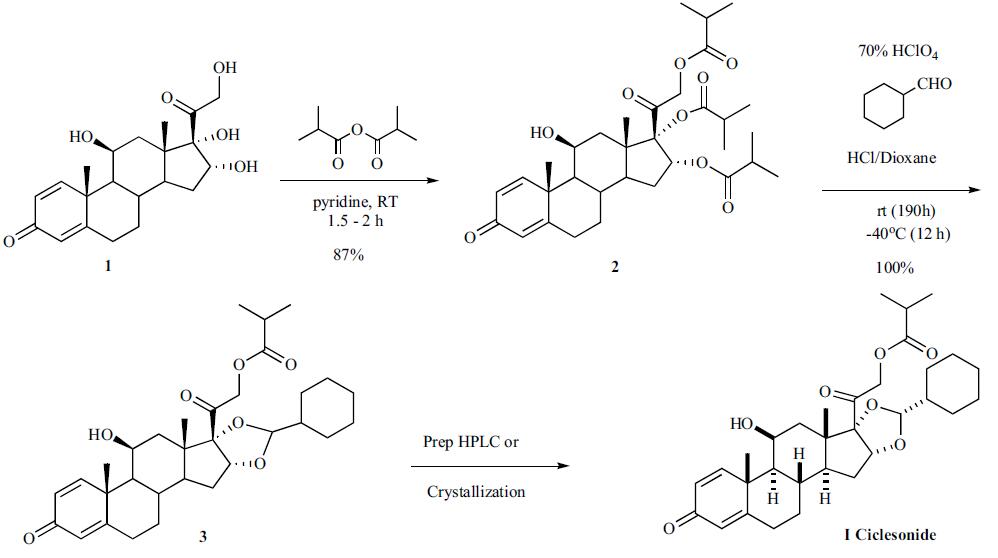
Metabolism
Des-ciclesonide undergoes metabolism in the liver to additional metabolites mainly by the cytochrome P450 (CYP) 3A4 isozyme and to a lesser extent by CYP 2D6.
storage
Store at +4°C
Properties of Ciclesonide
| Melting point: | 202-209?C |
| Boiling point: | 665.0±55.0 °C(Predicted) |
| Density | 1.23±0.1 g/cm3(Predicted) |
| storage temp. | Sealed in dry,2-8°C |
| solubility | Chlorofrom (Slightly), Methanol (Slightly) |
| pka | 14.25±0.70(Predicted) |
| form | Solid |
| form | neat |
| color | White to Off-White |
Safety information for Ciclesonide
Computed Descriptors for Ciclesonide
| InChIKey | LUKZNWIVRBCLON-GXOBDPJESA-N |
Abamectin manufacturer
Aarti Industries Limited (AIL)
New Products
4-AMINO-TETRAHYDRO-PYRAN-4-CARBOXYLIC ACID HCL 4-AMINO-TETRAHYDRO-PYRAN-4-CARBOXYLIC ACID 4-Aminotetrahydropyran-4-carbonitrile Hydrochloride (R)-3-Aminobutanenitrile Hydrochloride 3-((Dimethylamino)methyl)-5-methylhexan-2-one oxalate 5-Bromo-2-nitropyridine 4-(Dimethylamino)tetrahydro-2H-pyran-4-carbonitrile Diclofenac Potassium Ornidazole IP Diclofenac Sodium IP/BP/EP/USP Mefenamic Acid IP/BP/EP/USP Aceclofenac IP/BP/EP Nimesulide BP TIN AAS SOLUTION SILVER AAS SOLUTION ANDRADES REAGENT SOLUTION GRAMS SAFRANINE STAINING SOLUTION PLATINUM AAS SOLUTION TUNGSTEN AAS SOLUTION SODIUM METHYL PARABEN Methylcobalamin (vitamin B12) SODIUM VALPROATE Racecadotril XANTHAN GUMRelated products of tetrahydrofuran
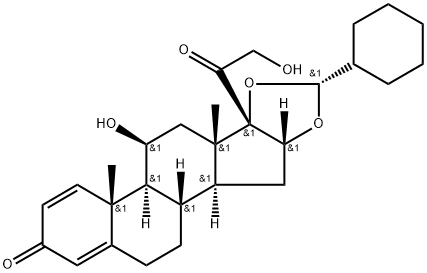

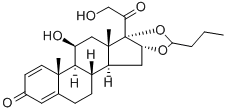
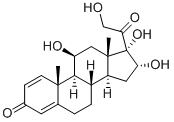
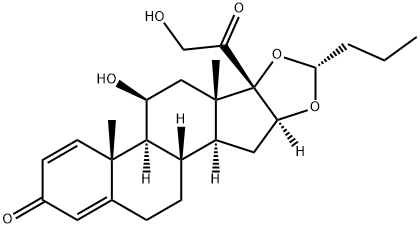
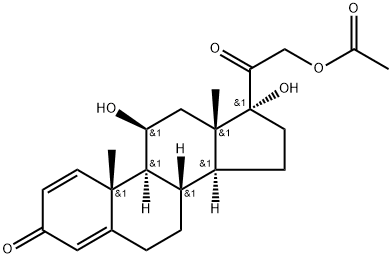
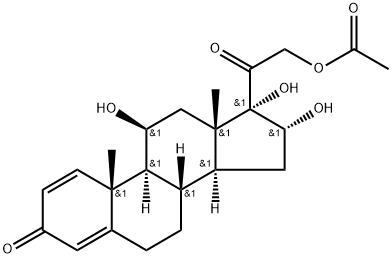
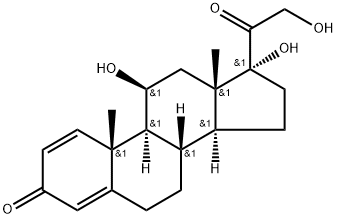
You may like
-
 126544-47-6 CICLESONIDE 99%View Details
126544-47-6 CICLESONIDE 99%View Details
126544-47-6 -
 Ciclesonide 98%View Details
Ciclesonide 98%View Details -
 126544-47-6 95-99%View Details
126544-47-6 95-99%View Details
126544-47-6 -
 Ciclesonide 126544-47-6 98%View Details
Ciclesonide 126544-47-6 98%View Details
126544-47-6 -
 126544-47-6 Ciclesonide 98%View Details
126544-47-6 Ciclesonide 98%View Details
126544-47-6 -
 126544-47-6 98%View Details
126544-47-6 98%View Details
126544-47-6 -
 Ciclesonide 98% (HPLC) CAS 126544-47-6View Details
Ciclesonide 98% (HPLC) CAS 126544-47-6View Details
126544-47-6 -
 Ciclesonide CAS 126544-47-6View Details
Ciclesonide CAS 126544-47-6View Details
126544-47-6